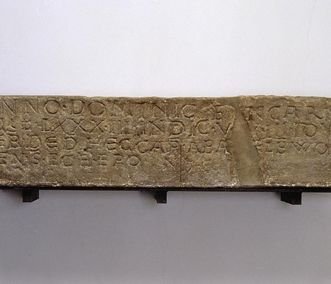LAST TRACES OF THE FIRST CASTLE
The stone and its inscription from 1083 bear witness to the first Württemberg castle. The dedication stone had previously been used as a doorstop and was only rediscovered in 1790. Since 1928, it has been displayed in the northern arm of the chapel. The inscription on the dedication stone declares that the Bishop Adalbert of Worms dedicates the castle chapel to Saint Nicholas of Myra. Today, the inscription is considered the earliest evidence of the House of Württemberg, which celebrated 900 years of existence in 1983.






